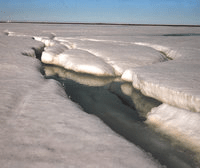According to virtually all global warming projections, humanity faces significantly more conflict in the decades ahead as we fight over dwindling resources in climate-stressed lands. However, those reports typically overlook one likely outcome that could counterbalance the more negative impacts of global warming -- that of northern territories becoming significantly milder, more accessible, and, most intriguingly, more hospitable to immigration. This is the essential good news to be found in Laurence C. Smith's fascinating new book, "The World in 2050."
The ambitious title is perhaps a bit misleading, for where Smith really delivers is on the subtitle: "Four Forces Shaping Civilization's Northern Future" (emphasis mine). After a predictable tour through the usual fears of too many people surviving on too little food, too little energy and too little water, Smith zeroes in on the crux of his geography-centric futurology: the rise of the "New North" and what it will mean for a planet undergoing large-scale ecological change thanks to global warming.
That we are experiencing serious environmental shifts is beyond doubt, and Smith deftly avoids the questions of how responsible humanity is for them, and what we should be doing to curb CO2 emissions. Instead, he simply notes that with each recent decade, spring has arrived four days earlier, while plants and animals have simultaneously moved almost four miles closer to the poles and almost 20 feet higher in elevation. Smith then proceeds to explore this "massive ecological reorganization of the planet," with all of nature seemingly heading north.

